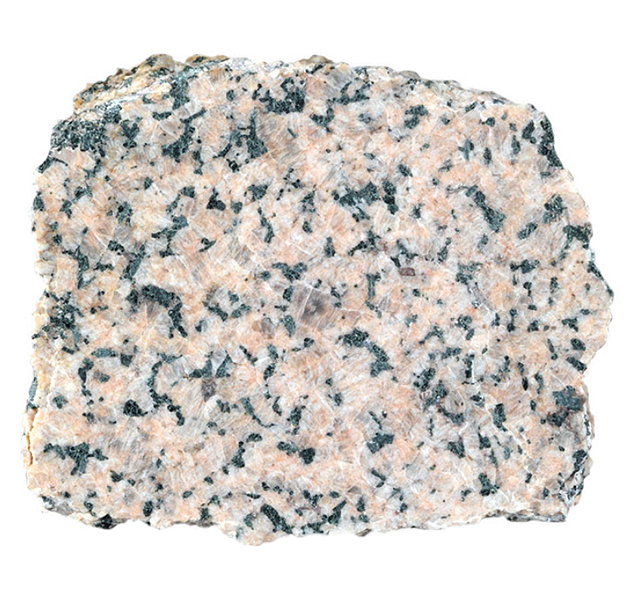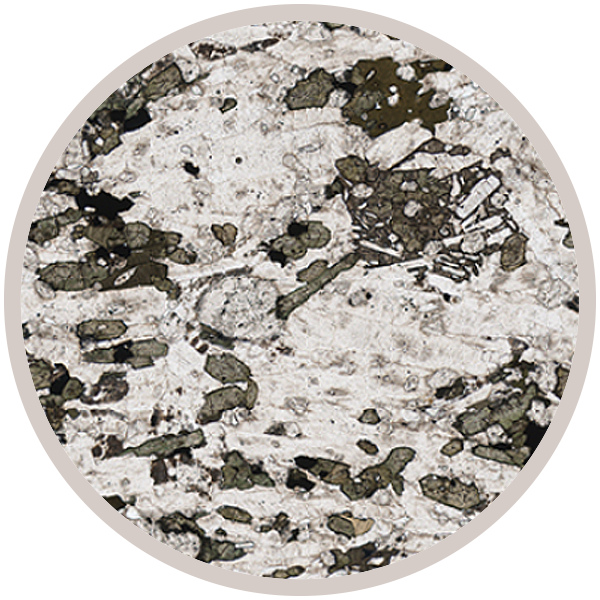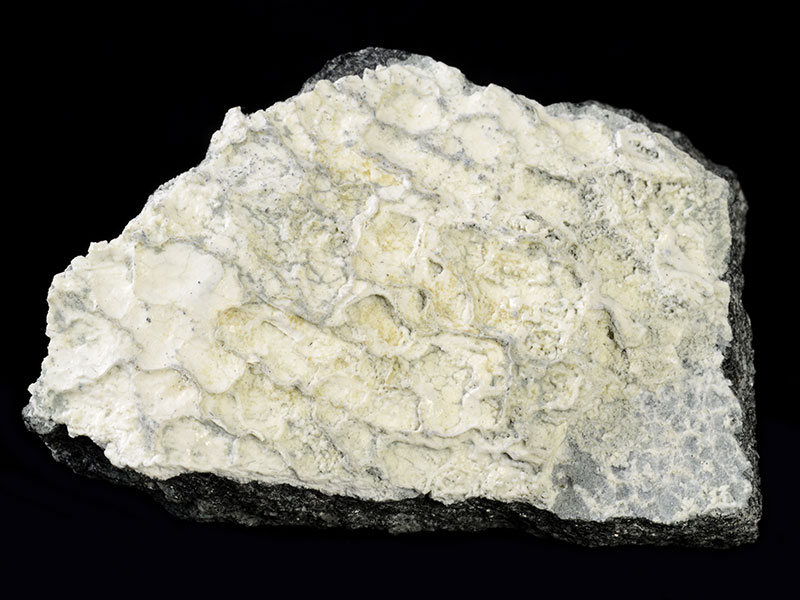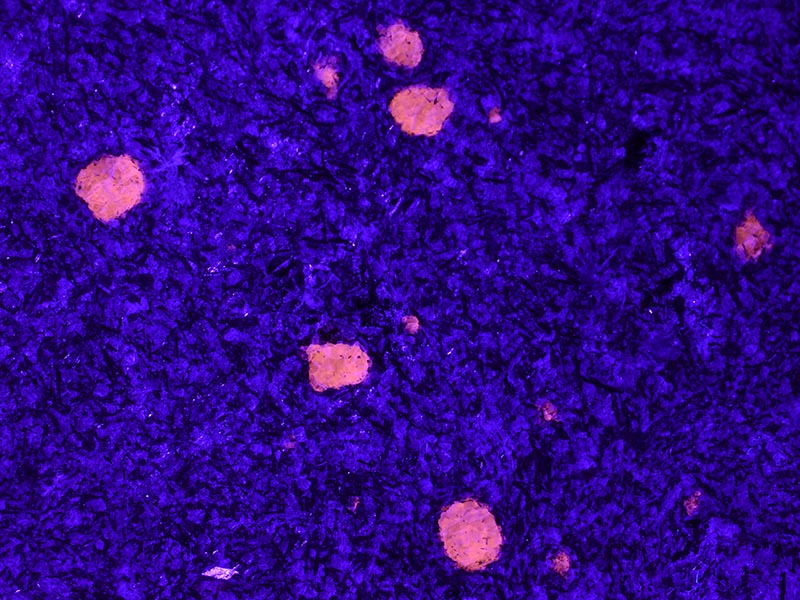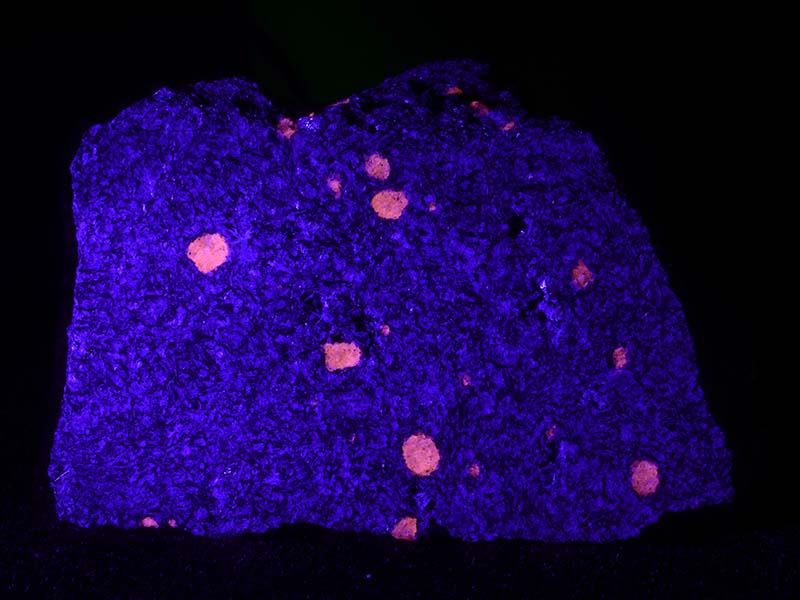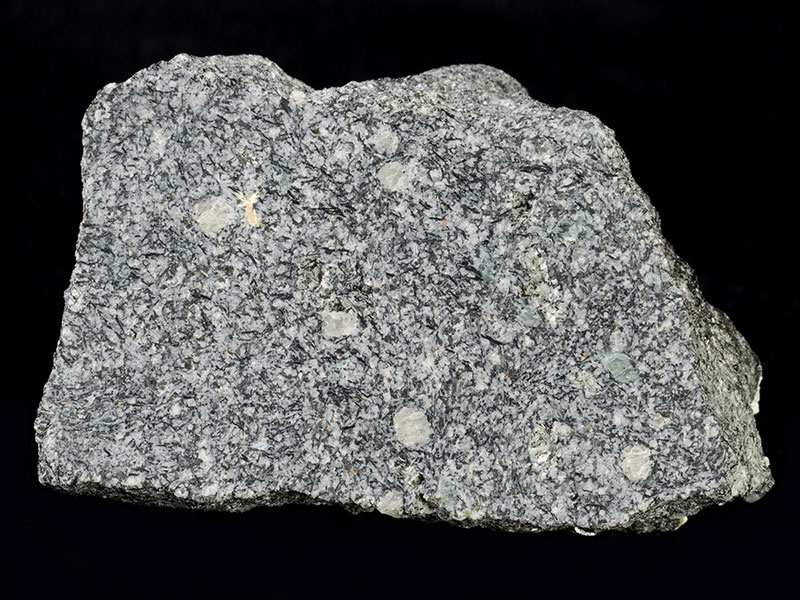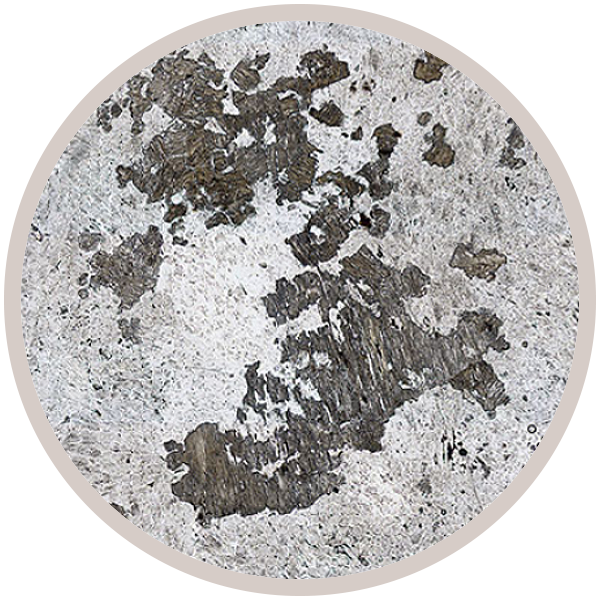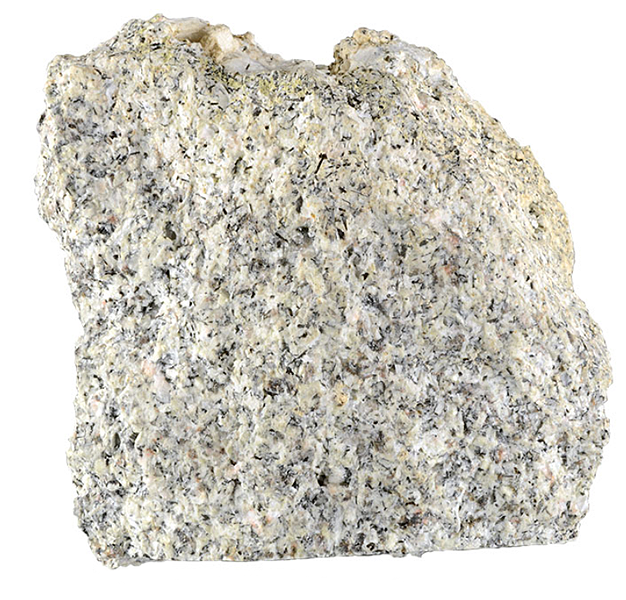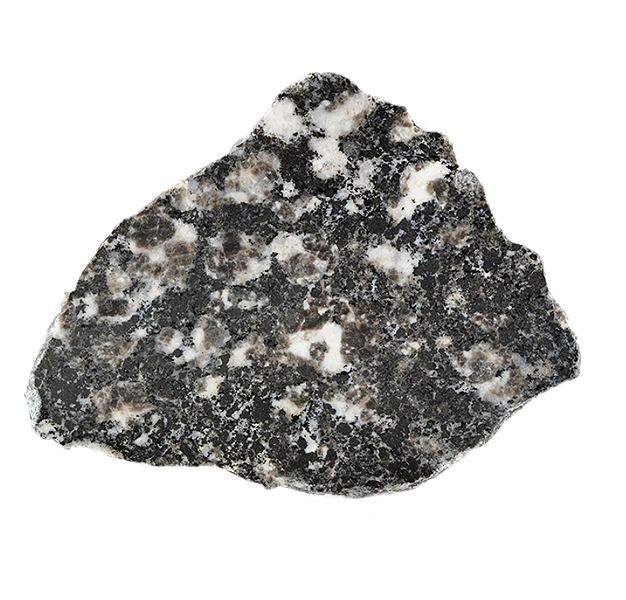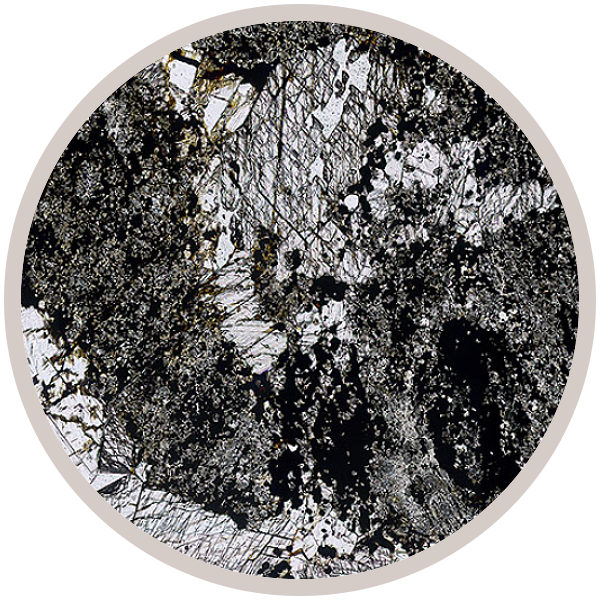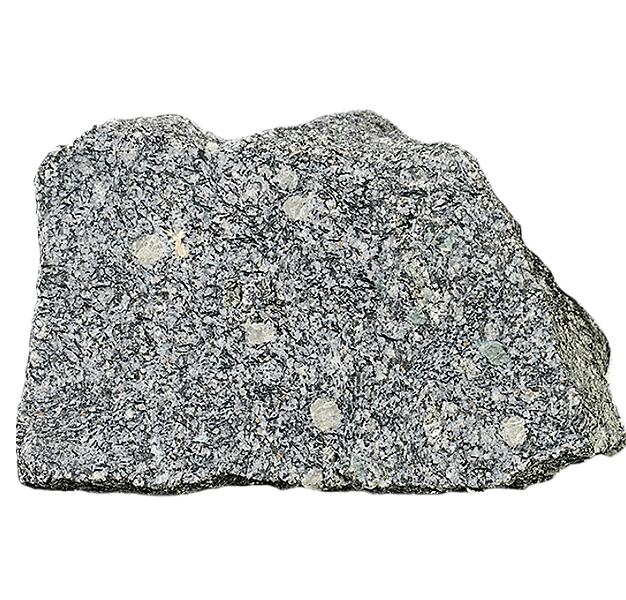
Fact sheet
Sample MTD08 collected by Michael T. Doel
Described as having naujakasite and nepheline
Rotation 1 - steenstrupine Na14Mn22+(Fe3+,Mn3+)2Ce6(Zr,Th)(Si6O18)2(PO4)6(HPO4)(OH)2·2H2O
Rotation 2 - arfvedsonite [Na][Na2][Fe42+Fe3+]Si8O22(OH)2
Rotation 3 - sodalite Na8(Al6Si6O24)Cl2
Rotation 4 - microcline KAlSi3O8
Ilimaussaq is the type locality for arfvedsonite and naujakasite (good cross-section of the latter at X42.24, Y14.71 mm)
The Ilimaussaq alkaline complex is the type locality for agpaitic nepheline syenites and represents an enormous concentration of rare elements, notably Li, Be, Nb, Zr, REE, Y, Th and U. Around 220 mineral species have been identified. We can't identify all the minerals present in these samples. Email us at virtual-microscope@open.ac.uk if you can help.
Note we have recently expanded the collection to include other syenite complexes worldwide.
See also Alex Strekeisen's great website for more information on syenite complexes.
Sample details
More from this collection
